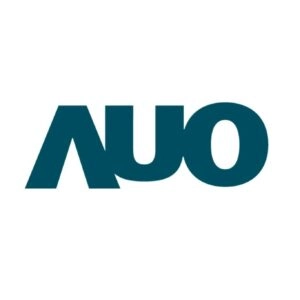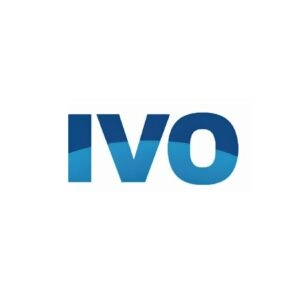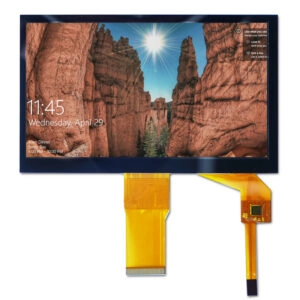The automotive sector keeps advancing toward more advanced in-vehicle tech setups, with touchscreen panels turning into common features in all kinds of cars. Although capacitive touch monitors lead in everyday gadgets, resistive touchscreen monitors hold strong benefits for car uses. This full guide looks at why resistive tech stays useful in today’s cars and how makers fit these screens into car systems.
As a top touchscreen manufacturer, Miqidisplay offers tailored options for car needs where tough surroundings, steady work, and low costs guide tech choices.
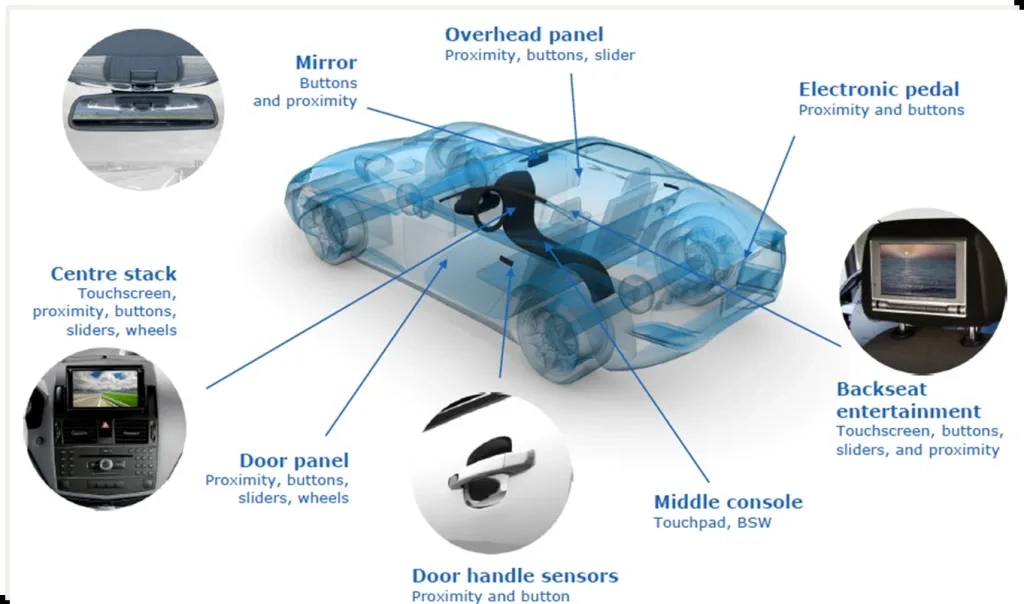
Understanding Resistive Touch Technology in Automotive Context
Resistive touchscreens work via pressure sensing. They use two bendable conductive sheets divided by a thin insulating space. When force pushes them, the sheets touch at exact spots. This creates electric links that record as touch signals. This basic working idea gives clear edges for car touchscreens. There, weather factors, input ways, and dependability needs vary a lot from regular gadget uses.
Current car resistive touchscreens include better materials and smart controllers. These provide traits that fit vehicle settings well. Grasping these tech details helps show why resistive tech keeps helping car makers well. This holds even as capacitive choices grow popular in other areas.
Key Advantages of Resistive Touch in Automotive Systems
Glove and Stylus Compatibility
One of the biggest benefits for car uses comes from full input matching. Unlike capacitive touchscreens that need conductive touch, resistive tech reacts to any pressure item. This includes bare fingers, gloved hands, styluses, or other tools. Such flexibility matters a lot in cars. Drivers might wear gloves in cold times or need exact stylus taps for navigation address entry.
Fleet cars, big trucks, and delivery vans gain much from glove-use ability. Drivers often require screen access while in safety gear. This real need frequently makes resistive tech the sole practical choice for work car uses.
Environmental Resilience
Car settings bring tough work conditions that resistive touchscreens manage well. Heat swings from freezing winters to hot summers influence screen work. Yet, resistive tech keeps steady action over broad heat levels. The pressure sensing rule stays untouched by heat changes that might hurt capacitive sensing precision.
Strength against water, dirt, and pollutants forms another vital edge. Resistive touchscreens run reliably even with humidity, condensation, or dust bits that enter car insides. This toughness guarantees steady results no matter weather states or cleaning habits.
Cost-Effectiveness for Vehicle Integration
Car makers check tech picks closely for cost effects over large output numbers. Resistive touchscreens give good money savings versus capacitive ones. This stands out for bigger screen sizes often seen in infotainment setups and navigation panels. Simple making steps and established output methods add to cost wins. These grow big when spread over thousands of cars.
Less power use brings extra work gains. Lower electric needs from touchscreen setups lighten total car power system strain. They also help better fuel use. Such points grow more key as car makers fine-tune every part for top efficiency.
Proven Reliability Under Vibration
Cars run under ongoing shake states that can influence screen work. Resistive touchscreens show great dependability despite constant shake during usual driving. The build design holds up to shake without fake inputs or lower feel. These prove vital for car safety and user happiness.
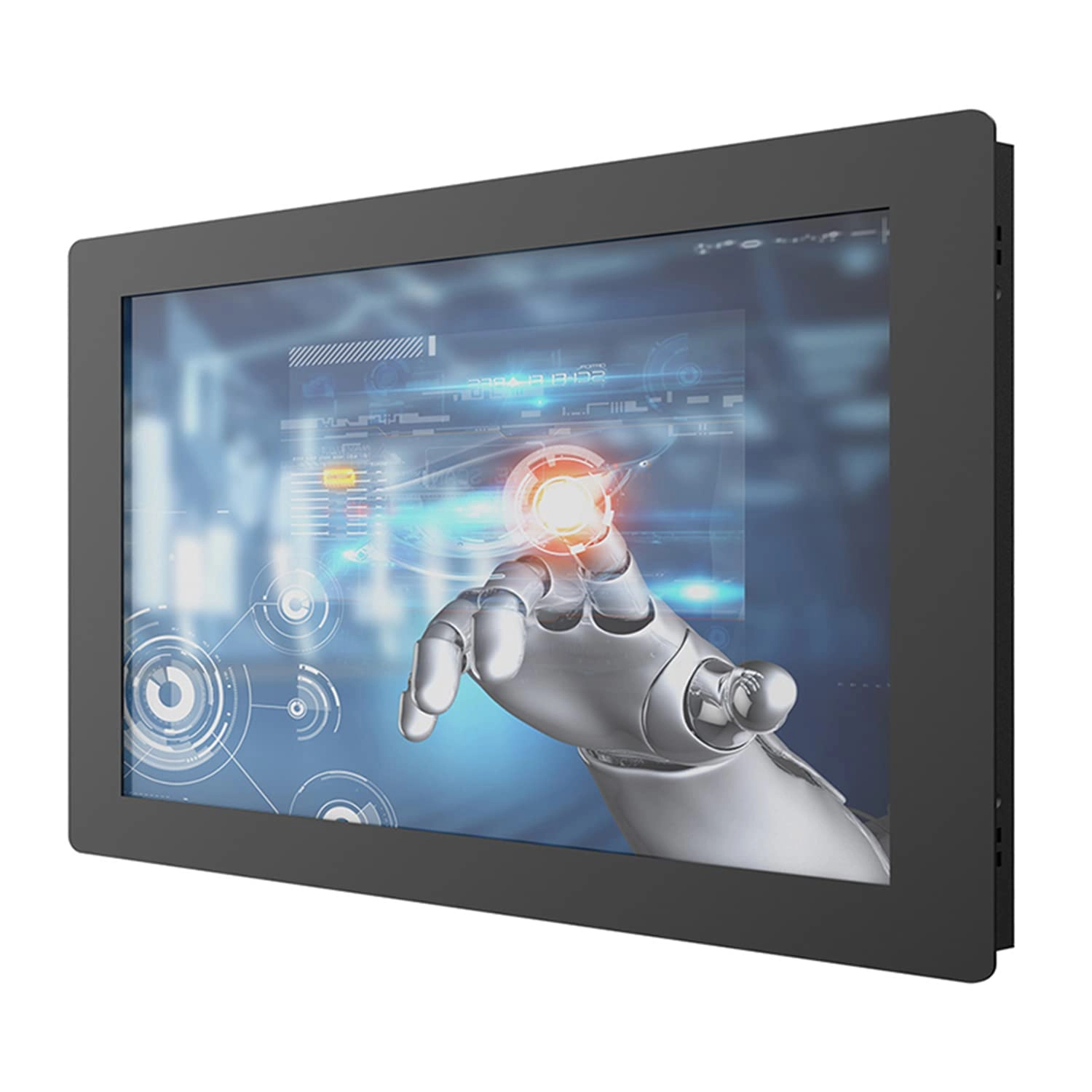
Integration Considerations for Automotive Applications
Dashboard and Console Installation
Today’s cars place touchscreen panels across inside designs. This covers center-console infotainment units, climate control boards, back-seat fun screens, and instrument group links. Touch screen monitors built for car fitting handle space limits. They still offer enough screen size for clear sight and easy use.
Setup factors include best view angles for driver and rider spots. They also cover links with current car power systems and match with dashboard looks. Resistive touchscreens’ choices in size and fix options ease fitting across varied car builds.
Infotainment System Integration
Car infotainment setups stand as main touchscreen uses. They give panels for navigation, sound control, phone links, and car setting handles. Resistive touchscreens provide enough work for these tasks. They keep cost wins key to car money matters.
Screen sharpness and clear optics meet infotainment needs despite resistive tech’s many-layer build. Anti-glare layers cut sun reflections that might block sight in day driving. These prove vital for safe runs and user joy.
Climate Control and Vehicle Settings
Past fun tasks, touchscreens more often handle climate setups, seat changes, and car setup options. These control uses gain from resistive tech’s exact input catch. This allows right picks of set heat values or change tweaks without annoying input mistakes.
The one-touch work style of resistive touchscreens sets little limit for ordered menu moves common in car control panels. Users seldom need multi-touch moves for climate tweaks or setup changes. This makes resistive tech fully suitable for these tasks.
Comparing Resistive and Capacitive for Automotive Use
When Resistive Technology Excels
Work cars, fleet uses, and pro transport gain most from resistive touchscreens. Glove-work needs, rough run settings, and cost care in work-car buys favor resistive tech picks. Taxi cabs, delivery cars, farm tools, and build cars stand as perfect resistive-touchscreen uses.
Budget-focused car groups where cost cuts guide spec choices also like resistive tech. Entry-level cars and value models can add touchscreen panels via resistive tech. They keep fair prices. This spreads touchscreen access over wider market groups.
Capacitive Technology Applications
High-end cars and user-focused infotainment setups more use capacitive touchscreens for better visual quality and quick feel. Multi-touch move support allows easy map zooms and panel moves that boost user feel. Luxury car buyers want top panel quality that capacitive tech gives despite higher costs.
Grasping these use limits helps right tech picks instead of always choosing newest choices no matter fit. Both techs serve real roles in car settings based on set car needs and target market hopes.
Technical Considerations for Automotive Touchscreens
Temperature Range Specifications
Car touchscreens must work over extreme heat levels. These usually run from -30 °C to +85 °C for steady action in varied weather. Resistive touchscreens keep work across these levels via material picks and build ways. These handle heat growth without hurting touch feel or precision.
Heat-fix programs in new touch controllers auto change feel limits based on around states. They ensure steady work no matter heat shifts. This change ability proves key for dependable car runs across seasons and areas.
Vibration and Shock Resistance
Car settings put parts under constant shake and rare shock from road bumps. Resistive touchscreens made for car uses go through strict shake tests to check work under ongoing exposure. Build factors include safe fixes, stronger builds, and materials picked for shake strength.
The ease of resistive tech’s build adds to natural shake strength. Fewer move parts and simple setup lower risk to shake-caused breaks versus more complex choices.
Display Visibility Optimization
Car touchscreens must stay visible under changing light states. This includes bright sun, dusk, and night dark. Resistive touchscreens include several traits for sight needs:
Anti-glare coatings: Surface fixes cut reflections from windshield shine and direct sun. They keep screen reading in day driving.
Adjustable brightness: Auto brightness changes based on light sensors ensure best sight without too much shine at night runs.
High contrast displays: Better contrast levels improve reading across light states. They allow clear text and icon sight.
FAQ
Q1: What is the main difference between resistive and capacitive touchscreens in automotive use?
Resistive touchscreens detect pressure applied to layered conductive surfaces. This enables use with any pointer (glove, stylus, finger). Capacitive screens detect conductive contact and usually support multi-touch gestures.
Q2: Are resistive touchscreens still cost-effective for modern vehicles?
Yes. Because they use simpler materials and mature production techniques, resistive touchscreens offer favourable economics. This stands especially in vehicle segments where glove use, harsh environments or volume cost constraints apply.
Q3: What vehicle applications favour resistive touchscreens?
Commercial vehicles (fleet, trucks, construction), industrial transport, budget model passenger vehicles, climate or settings control panels, ruggedised HMIs. These cover any scenario where glove use, vibration, contamination or cost are significant factors.
Q4: What environmental conditions must automotive touchscreens survive?
Key conditions include wide temperature range (often –30 °C to +85 °C or more), vibration/shock resistance, exposure to dust/humidity, sunlight readability, anti-glare and reliable operation over long service life and many cycles.
Q5: How does the manufacturer support customization for automotive use?
Display manufacturers such as Miqidisplay provide customisation services: cable length/pin modifications, touch upgrades (capacitive/resistive), interface adjustments (HDMI, MIPI, LVDS, RGB/TTL), cover glass thickness, optical bonding and ruggedisation for automotive-grade service.
Partner with Miqidisplay – Your Reliable Touchscreen Manufacturer & Supplier
As a premier display manufacturer, supplier, and factory, Miqidisplay invites automotive manufacturers and suppliers to improve vehicle panels with custom resistive touch screen options. Send project needs today for a personal plan within 48 hours. This ensures tough, low-cost fits that boost output speed. Reach the sales team via email or live chat to talk OEM/ODM ties and gain steady supply for your next model line. Partner with Miqidisplay to create without limits.
